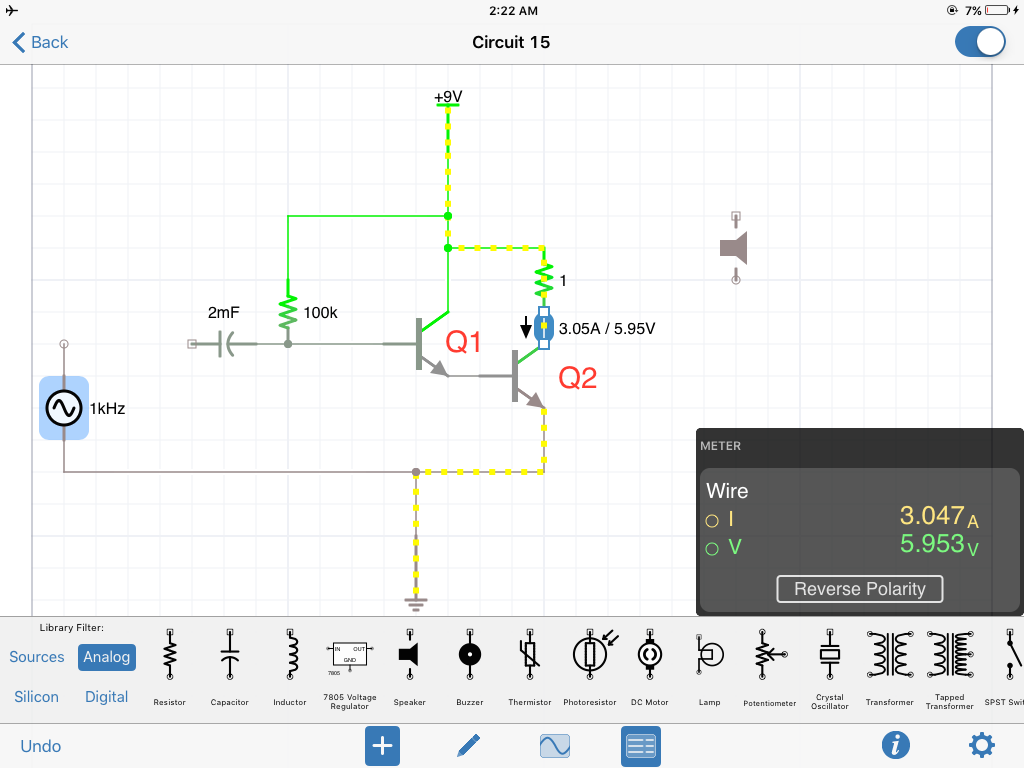This is an audio amp that we built for a project.
I can easily find the first collector current from the first transistor by multiplying it with its Beta(200) and since the first transistor is beta dependent.
on the other hand the collect current on the second stage (the current that actually matters) is not Beta dependent and changes as collector resistor value changes, here's proof:
Im stuck and can't figure out how to calculate it. any help is greatly appreciated
ok so here's an update apparently the last stage is at saturation... which means Ic=Vcc/Rc... so for Rc=10ohms Ic=9V/10ohms=roughly 900mA and for Rc=100ohms Ic=9V/100ohms=roughly 90mA ...
what I just cant understand is when Rc=1ohms Ic is not 9A but is Ib*Beta=3.5A







